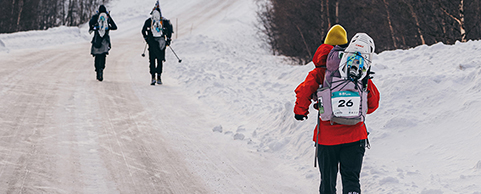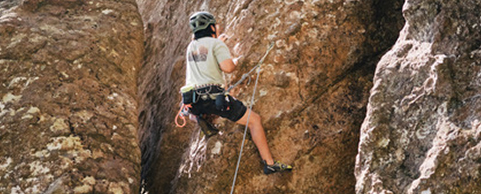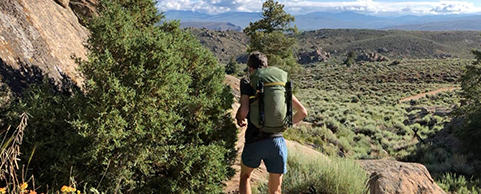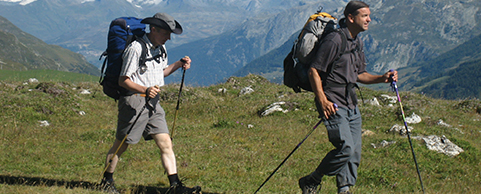How to Choose Bushwalking Boots, Part 1
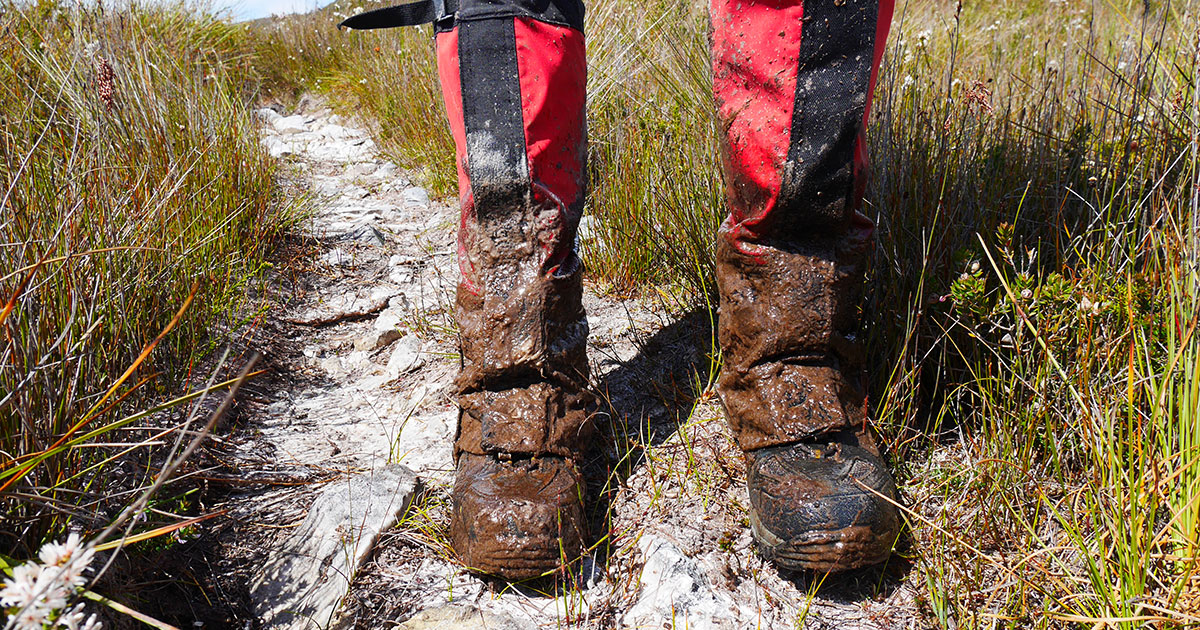
With hiking boots, whether it’s your first pair or you’re replacing some worn out old friends, finding the right bushwalking boots can be a daunting task. However, taking time to find the right boots is well worth the effort. The easiest way to find the right boot is to come in and get fitted by one of our well-informed staff. If you’re unable to come into the store, then finding the right boot is undoubtedly more difficult. Here you will find a guide to getting a boot from us online. Part 1 below separates our boot range into some main categories to help you hone your search. Part 2 focuses on fitting from home and the key indicators of a good fit.
Hiking Boot Types
With so many different styles or types of hiking boots, it’s easy to feel confuddled. To the uninitiated, each model can seem totally unique. However, there are general themes in our boot range. Understanding these themes will help you filter through our range and match a boot to your specific needs. In each category, I’ve included examples from multiple brands. Every brand uses its own lasts and therefore it’s good to have options from different brands to try and match your foot shape.
General Features
There are some general features you’ll find across almost all of our hiking boots, regardless of where they fit in the categories listed below.
- Almost all of our boots have a waterproof lining made from membranes such as GORE-TEX®. For year-round use in Australia, having a waterproof lining is ideal. However, if you only go bushwalking in the summer months or in particularly arid parts of the country, boots without this lining such as the Asolo TPS 535 are more breathable and could be a better option for you.
- All of our boots feature high quality outsoles designed for walking on harsh and muddy terrain. Most of the brands we stock use Vibram® soles or their own proprietary rubber. These high-quality outsoles provide grip and durability giving you better traction underfoot.
 |
|
|
Heavy Duty Hiking Boots
Examples: Asolo Lagazoui, Asolo TPS 520, Anatom Q4 Cuillin
Once upon a time, heavy duty hiking boots were seen as the go-to option for general bushwalking. Although the advent of lightweight gear coincided with lighter, more flexible boots. Despite this, traditional boots are still a great option for more demanding bushwalking trips.
Heavy duty bushwalking boots are built from bombproof materials, typically having a thick full leather upper. Using a thicker leather gives maximum durability. In addition, this style will often use a continuous piece of leather around the boot, as seen in the Anatom Q4 Cuillin and Asolo TPS 520. By reducing seams, you end up with less failure points which also adds to the boot’s durability.
Some boots in this class include a full rubber rand, as seen on the Asolo Lagazuoi and Anatom Q4 Cuillin. On top of the already robust leather, a rubber rand gives extra protection from brush and harsher terrain such as scree slopes.
Under foot, this style uses a very stiff midsole with minimal flexibility. Initially when fitting, this boot might not feel as comfortable as a lighter boot. Although a stiffer midsole really shines when you have 20kg on your back walking straight up a steep hill. In this situation, you’re putting a huge amount of extra pressure on your ankles and lower body ligaments. A stiffer midsole helps by reducing strain on your feet and ankles which in turn reduces fatigue overall.
In order to utilise the benefits of a more rigid sole, these boots often have a higher cut. Having a higher cut allows you to cinch the boot further around your ankle providing a more secure and stable fit.
Ideal Uses: Off-track expeditions, bushwalking over serious terrain, pack-carrying over 15kg, glacier walking
 |
|
|
All-Round Multiday
Examples: Salomon Quest 4D GTX, Asolo Drifter, Vasque St Elias, La Sportiva Trango Trek
An all-round hiking boot is supportive enough for multiday bushwalking while not being too unwieldly for shorter trips. The versatility of this style makes it ideal if you’re after one boot to do it all.
Often, a general bushwalking boot will use a combination of leather and synthetic materials such as in the Salomon Quest 4D GTX and the Asolo Drifter. This combination – also called a composite upper – is a trade-off between weight, breathability and durability. Using leather in high-wear areas provides some protection from harsh terrain. Using synthetic over the top of a GORE-TEX® lined boot results in better breathability than full leather. There are some exceptions like the Vasque St Elias, which is a supportive yet flexible full leather boot.
Compared to a heavy-duty boot, this style of boot often has a slightly more flexible midsole. This flexibility comes in handy if you’re consistently walking on flat or groomed trails with heavy loads. It should be noted that rigidity in this category is specific to the boot. For example, the La Sportiva Trango Trek and Vasque St Elias are both relatively lightweight boots great for multiday walking but the Trango feels considerably stiffer underfoot.
Composite materials and a less built up midsole result in a lighter boot overall.
These boots also feature a relatively high cut allowing the boot to securely wrap the ankle. As with more heavy-duty boots, this feature provides stability underfoot.
Ideal Uses: Multiday bushwalking, short trips, overnighters
 |
|
|
Medium Duty
Examples: Asolo Finder, Vasque AT Breeze GTX, Salomon Quest Prime GTX, Anatom V2 Suilven
A medium duty boot has a very similar silhouette and feature set as an all-round bushwalking boot. The main difference between them is that medium duty boots have a much more flexible midsole. One might think, why get a medium duty boot if the slightly heavier all-round boot offers a more supportive sole unit? The answer is; depending on your style of bushwalking you might not need the more built up boot. Boots of this type are as light as possible while still being a functional bushwalking boot. If you only go on shorter trips, you might not be carrying weights which necessitate a more supportive midsole. If you use very lightweight gear, these boots may even provide enough support for multiday adventures depending on your conditioning.
With a less rigid midsole, you won’t feel over booted using this style on day walks. Being so flexible, models such as the Asolo Finder and Salomon Quest Prime GTX are quite comfortable to walk in even while not carrying a pack.
Ideal Uses: Short trips, day hiking, lightweight hiking
 |
|
|
Lightweight
Examples: La Sportiva Stream, Asolo Grid Mid
This style of boot shines for daywalking when your pack weight is low or for guided walking where you’re only carrying minimal essentials.
Lightweight boots exist somewhere between walking shoes and medium duty boots. For instance, both the La Sportiva Stream and the Asolo Grid Mid have very similar lower cut options: the La Sportivas Spire and Asolo Grid.
These boots are a far cry from the traditional leather boots of yesteryear. With a supple midsole and thinner materials, these boots boast the lowest overall weight while still providing some support.
Most boots in this category are made with a composite upper or wholly out of synthetic materials such as in the Asolo Grid Mid.
For most people, the most pertinent aspect of gear is weight. Whether it's tents, packs, stoves or mats; outdoor brands are providing more and more options for super lightweight gear. Boots are no different. With many super lightweight hiking boots on the market, it’s quite logical to assume that these boots offer the same functionality as preceding all-round boots. It should be noted that even though their weight is alluring, these boots may not offer comparable support or durability to other types listed above.
Ideal Uses: Day hiking, guided trips
Conclusion
There are many resources on the Internet that advocate gear based on weight. For most gear, this makes sense. Lighter gear equals lighter pack, which equals less fatigue. When it comes to footwear, this paradigm can be a bit problematic. There is no doubt that there are people out there who walk extremely long distances wearing very minimal shoes. However, if you’re just getting into bushwalking, minimal shoes don’t provide enough support. One often missed consideration is that people who go thru-hiking condition their bodies by doing so and use extremely lightweight gear. After all, if you went bushwalking every single day, year-round, your body would be so conditioned you could probably go barefoot and be plenty comfortable! What I'm trying to say is that for the average person who balances bushwalking with work or study, supportive footwear is essential for having a comfortable trip that doesn’t leave your feet and ligaments screaming for days after you get home. If you’re having trouble deciding which boot is best for you, feel free to get in touch with us. If you’ve decided on a boot, see Part 2 for some tips and tricks for fitting from home.

Mitchell Younes,
Bogong Equipment
See our range of hiking boots.
Questions? Visit us, email us or call us (03 9600 0599).
More Articles
- HOW TO CHOOSE BUSHWALKING BOOTS, PART 2
- LIGHTWEIGHT BUSHWALKING: HOW TO
- SLEEPING BAGS: HOW TO CHOOSE
- MORE RESOURCES...













